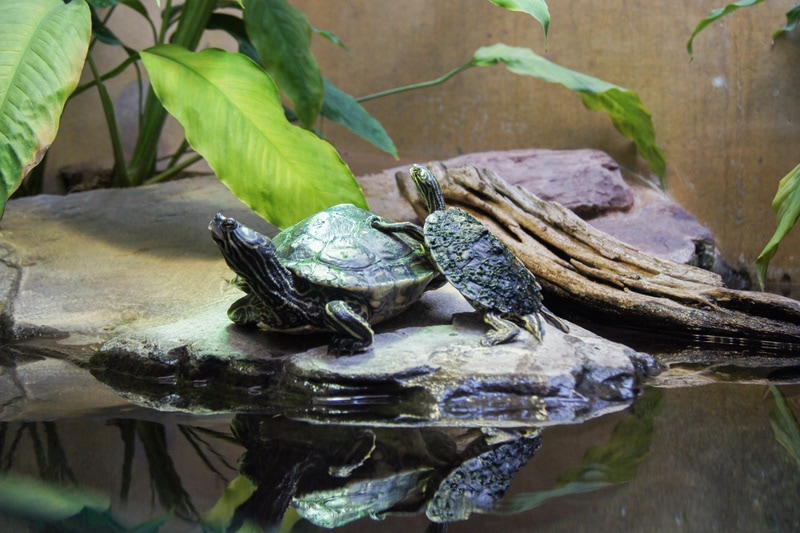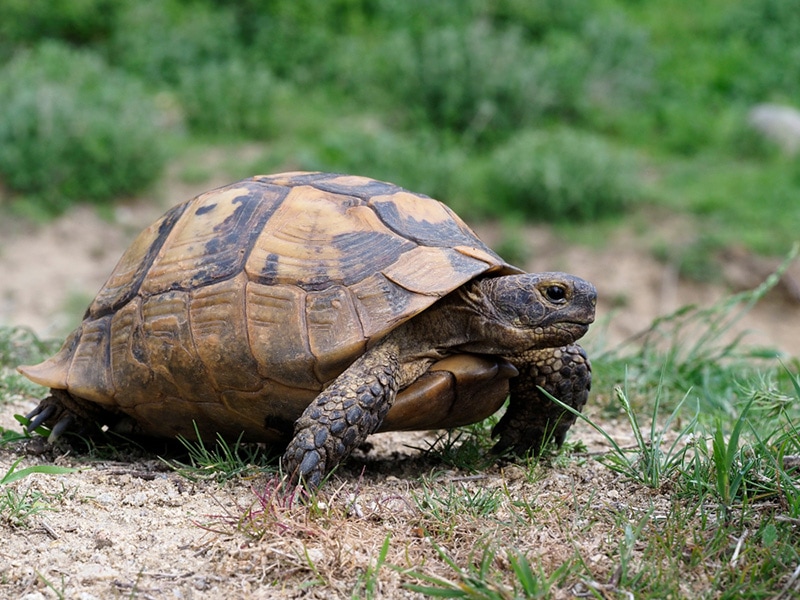Why Is My Turtle Tank Water Cloudy? 7 Vet-Reviewed Reasons
Updated on
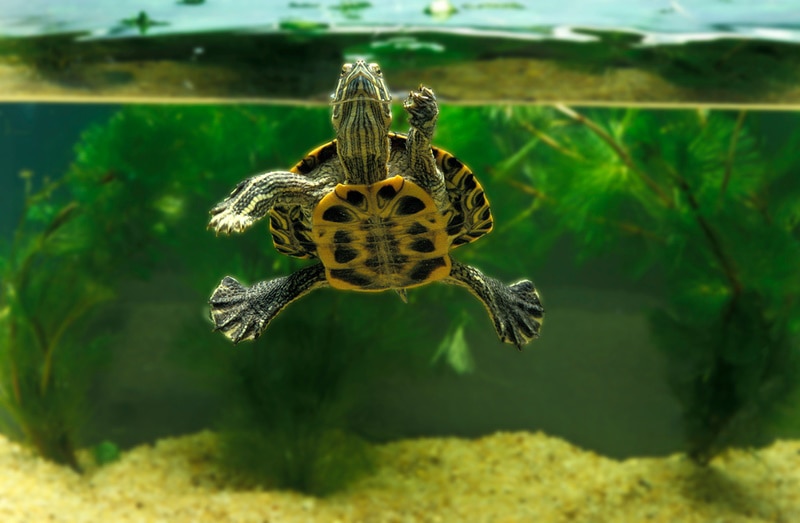
Most turtles are kept in fish tanks where they can have a place to swim, sit out of the water, warm up, and eat. Turtles can be quite messy pets, you’ll need to regularly clean your turtle’s tank to prevent the water from becoming cloudy and foul. Sometimes, however, your turtle’s tank water will stay cloudy no matter what you do. Read on to find out how to keep your turtle’s living space pristine. Below, we’ll discuss the seven most likely reasons your turtle’s tank is cloudy.
The 7 Reasons Your Turtle Tank Water Is Cloudy
1. You’re Overfeeding Your Turtle
Overfeeding a turtle is one of the main reasons that the water becomes cloudy and stays that way. When you feed your turtle too much food, the extra food they don’t eat starts to decompose, and the nutrients begin releasing organic compounds and ammonia into the water.
These excess nutrients in your turtle’s tank can lead to algae growth. Green algae is generally the most common algae in a turtle tank and will cause the water to become greenish and cloudy if there’s enough of it.

2. You’ve Recently Set up A New Tank
If you have just set up a new tank or changed more than approximately 25% of the water then ‘new tank syndrome’ is a common cause of cloudy tank water. This will usually fix itself if the tank has been set up correctly. When a tank is first set up the beneficial bacteria that deals with the buildup of ammonia can take a while to become established, leading to cloudy water.
3. You’ve Just Added a New Substrate to Your Turtle’s Tank
A substrate is a material used on the bottom of a turtle tank, whether sand, pebbles, stones, glass beads, etc. While most substrates aren’t harmful to turtles, many are covered with dust and debris when you purchase them. When introduced into your turtle’s tank, the dust and debris can cause the tank to become cloudy, but the problem is usually temporary.
Some substrates aren’t suitable for turtle tanks. Because most turtles kept as pets are freshwater turtles, crushed coral and coral sand should be avoided. Freshwater river sand is the best choice of substrate for a turtle tank, and it’s even better when mixed with river rocks. River stones are also suitable, but they must be smooth so that, when your turtle dives under the water, it doesn’t injure its shell.
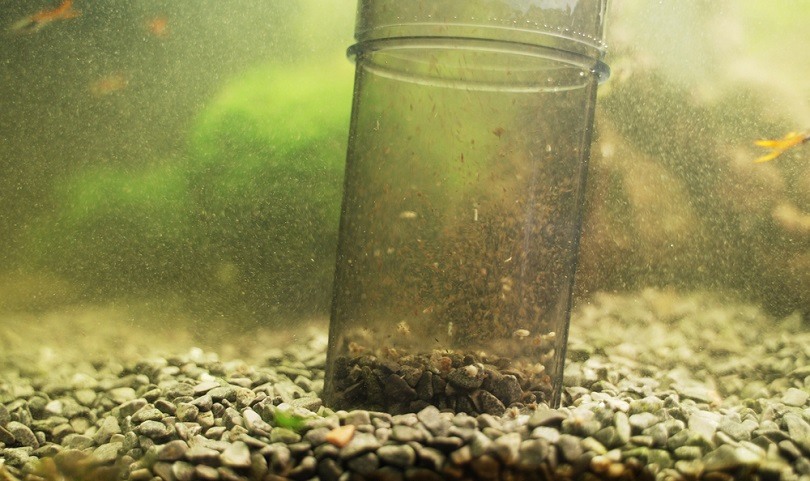
4. There’s Too Much Light Shining on Your Turtle’s Tank
Algae is one of the leading causes of cloudy tank water in a turtle tank. Algae is a plant, and most plants grow using photosynthesis. Photosynthesis is when plants use sunlight (and other chemicals) to grow. That’s why if you put a turtle tank in a sunny spot, more algae will develop, and the tank’s water will get cloudy. The same happens when too many lights are used over a turtle tank, especially those emitting UV rays.
5. The Driftwood in Your Turtle’s Tank Is Making the Water Cloudy
Driftwood and other decorative items in a turtle tank can often cause the water inside the tank to become cloudy. This usually occurs because the driftwood wasn’t soaked in water for a few days beforehand and contains particulates in the wood that float off when submerged. Another reason is that some types of wood release tannic acid. Tannic acid can cause the pH level of your tank’s water to drop precipitously and cause cloudiness. Wood chips and bark are not a great choice for a turtle tank for the same reason.
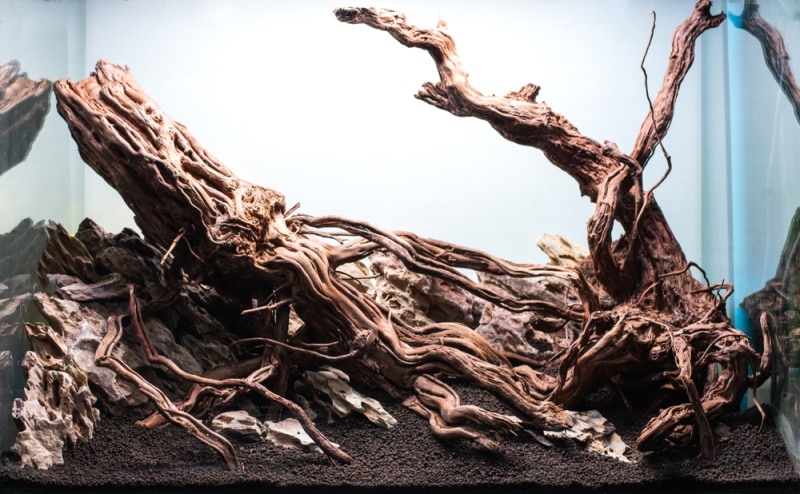
6. You have Too Many Turtles in One Tank
Overcrowding a turtle tank is another reason for cloudy water. Several turtles in a tank require more food and produce more urine and feces. All three of these substances are food for algae, which will bloom out of control if there’s too much. If you want to keep multiple turtles in a tank, it’s best to have a huge tank so that it’s not overwhelmed. Even then, however, you can still have too many turtles. In the wild, turtles are solitary animals. Yes, they can sometimes be seen in larger groups, especially in rivers where they sun themselves together. However, in a tank, most turtles won’t get along well, at least not for long.
7. Your Filter System Is Inadequate (or You Don’t Have One)
A lack, or complete absence, of filtration is a significant cause of cloudy tank water. If the filter isn’t strong enough, or you don’t have one, cloudy water will develop. If you have a type of turtle that swims in its water regularly, you must have an adequate filter system in the tank. Without one, the tank’s water will almost always stay cloudy.
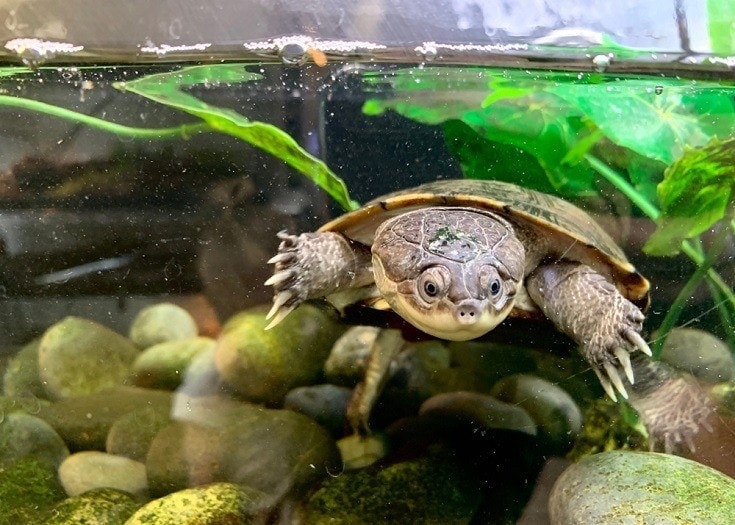
The 5 Ways How to Prevent Cloudy Water in a Fish Tank
You can prevent cloudy water in your turtle’s tank in several ways. Many have to do with proper maintenance, but others relate to other factors. Some of the best ways to prevent cloudy water in your turtle tank include the following:
1. Don’t Overfeed Your Turtle
Overfeeding is one of the worst things you can do since it clouds your tank and can cause your turtle to have other health issues.
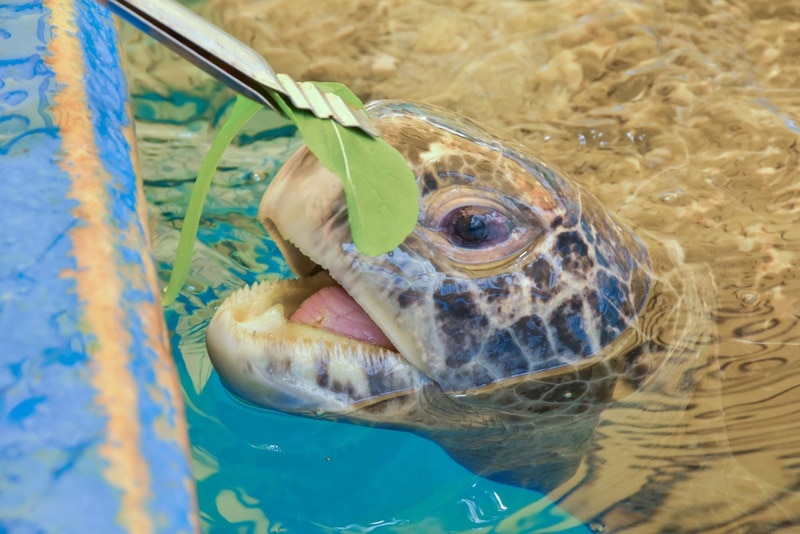
2. Use a Strong Water Filter
Turtles are very messy and can quickly turn clean clear water into a cloudy mess. An appropriate water filter is needed to prevent this happening. Filters are rated based on how much water they can cycle but these ratings are based on fish tanks rather than turtle tanks. Turtles are much more messy than fish and so you should get at least double the power the tank needs
3. Seed Your Turtle Tank With Established Plants and Substrate
Seeding is a process whereby you place substrate, plants, and other items from an established (and clean) turtle tank into a new tank. Because the transplanted materials are already full of beneficial bacteria, they will help the new tank become clean and clear much faster.
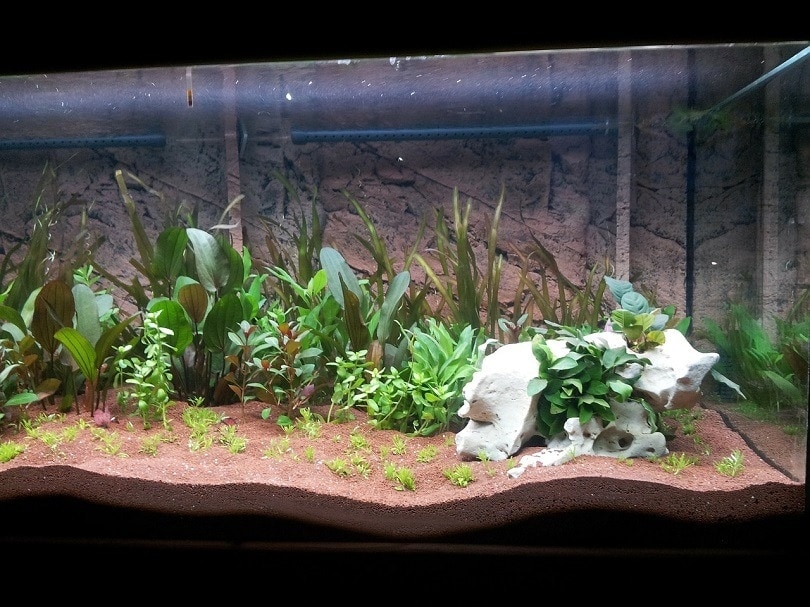
4. Don’t Overcrowd Your Turtle Tank With Too Many Turtles
Make sure the tank is large enough for your turtles. The general rule is that for every inch of carapace (upper shell) the tank should hold a minimum of 10 gallons of water. For every additional turtle there should be half as much water added again.
5. Perform Regular Water Changes and Monitor Water Quality
Regular weekly water changes of about 25% are recommended to remove ammonia and keep the tank clean. Freshwater pet turtles need water that is free from chlorine (as well as ammonia and other impurities) and with a neutral pH. Bottled spring water is ideal but it can be very expensive and tap water can be used if treated with an appropriate water treatment to remove the chlorine.Chemical levels of the water should be monitored regularly for ph, ammonia and nitrite/nitrate levels..
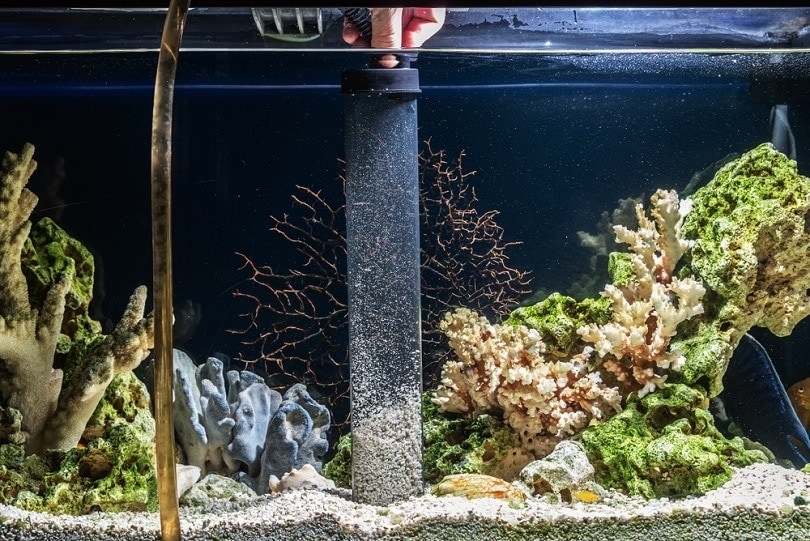
Final Thoughts
Turtles aren’t the cuddliest of pets, but they are fascinating. Keeping a turtle tank clean primarily involves maintaining adequate filtration and regularly cleaning the tank. Feeding your turtles correctly and using the right substrate is also essential. We hope these tips will allow you to keep your turtle’s tank water crystal clear and clean and provide a perfect home for your pet turtle!
Featured Image credit: slowmotiongli, Shutterstock



